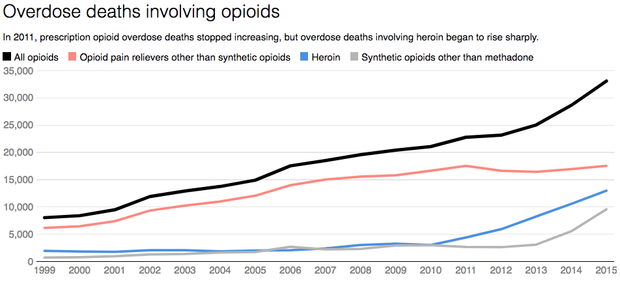Megan Hatch, MPH
Research Associate
Environmental public health covers a vast area, from the
air humans breathe to the way industrialization effects the communities we live
in and the food we eat. There are two branches that are particularly of growing
concern to Massachusetts however: rising temperatures and water levels. As an organization committed to public and
community health, the Institute for Community Health (ICH) is concerned about
the damages occurring because of climate change. Some of these issues are described below.
Rising
Temperatures:
Massachusetts has seen
some warm temperatures during the recent winter. While some might enjoy these warmer
temperatures, the warmth can support disease transmission, particularly of Lyme
disease. When winter temperatures are warm, fewer ticks die, resulting in more
ticks alive to carry Lyme disease and transmit it to humans1. Massachusetts
is already a hotbed for ticks, with 4518 confirmed and probable cases of Lyme
reported in MA in 20162. Lyme disease can cause significant
morbidity in life, including fatigue, swollen joints, and even cognitive
decline3. Lyme has been a public health issue for decades, and an
increase in temperatures should cause states to re-evaluate the type of
educational programs and screening mechanisms that are currently in use.

Along with expanded
timeframes for vectors to spread disease, rising temperatures can also give way
to heat waves, which increase the incidence of heat stroke. Heat stroke is a
condition characterized by the body’s inability to regulate its own temperature4.
Cities have seen rises in death rates during heat waves in the past few years4.
Cities are in a unique position during heatwaves, as they are hotter than
surrounding rural areas, due to the Urban Heat Island Effect5. The danger
of heat in cities has caused some, such as Chicago, to implement targeted
outreach to vulnerable neighborhoods, as a preventative measure before
heatwaves6.
Water
Levels:
Water is another facet of environmental public health that is of
concern. Access to water due to droughts is a growing problem across the world7,
and so is flooding due to sea level rise. Massachusetts is in a bit of a
precarious position when it comes to flooding, a 2016 study predicted8.
Due to a combination of gravitational pull on the ocean, South Pole ice melt,
and sinking of the Northeast, East Coast cities could have a 25% higher
increase in sea level than other areas of the planet8. Flooding due
to seawater rise, but also heavy downpours, can be vehicles for waterborne
illnesses, such as cryptosporidiosis
and campylobacteriosis, among many others9.
The danger is not over once floodwaters recede or heavy rainfalls stop,
however. The water-soaked items left in floodwater’s wake are perfect for
growing mold and harboring other bacteria that can make humans sick. A study
done after in New Orleans after Hurricane Katrina looked at asthma rates in
children. While mold is commonly a trigger for asthma and a concern after water
damage, the study also considered stress after a traumatizing event as a trigger
for asthmatic children10. This crossover from strictly environmental
factors such as bacteria, viruses, and mold, to behavioral risk factors
(stress), caused by environmental factors like flooding, highlights that public
health does not exist in a vacuum and all parts of human health can be
influenced by environmental public health. Large swaths of the greater Boston area
(including Malden, Cambridge, Revere, Chelsea, and Winthrop) are all in the predicted
flood zone of the below model11. The position of these communities
means public health agencies should look into needs assessments, and public
health prevention efforts, to be prepared should a flood ever occur. Boston and
Revere have already seen a taste of coastal flooding in January, due to Winter
Storm Grayson12.

*2050 sea level rise +
Major storm. Boston could experience 7 feet of flooding (2 feet of sea level
rise + 5 feet of storm surge = 7 feet of flooding). Data from
http://seachange.sasaki.com
As mentioned before, the various sections of public
health do not occur in a vacuum. In 2015, Researchers published their findings
that refugees (due to civil war or other conflicts) experience health
disparities at a greater rate than other populations13. On the
horizon is a new type of refugee: climate refugees, people who have been forced
out of their homes by environmental factors. Like other refugees, they will
face barriers to health equity, and the field of public health will need to add
resources to addressing these challenges.
For all public health issues mentioned above, it is
important to note that children, communities of color, and low-income
communities are usually more heavily affected than other demographics.
Need
for evaluation, research and assessment:
As
public health departments, cities, towns, and hospitals encounter these new
challenges caused by environmental factors, they will need to undertake needs assessments
to inform the type of programs that would benefit their populations.
Additionally, once programs are in place, they will need to be evaluated to
ensure they are meeting the population’s needs, and to seek out areas of
improvement. ICH has worked with local public health departments, the
Massachusetts Department of Public Health, and hospitals in the past, working
with a variety of data, from medical records
claims, to the YBRS for social behavioral risk factors for health. As such,
ICH’s previous work puts us in an excellent position to help other public
health agencies plan, evaluate, and improve programs to reach their
climate-change preparedness goals.
Sources:














